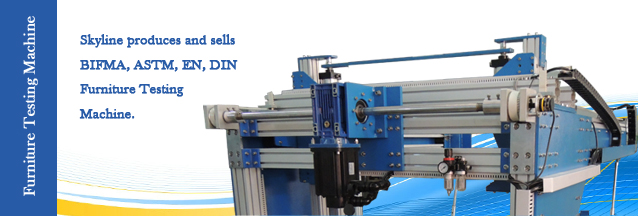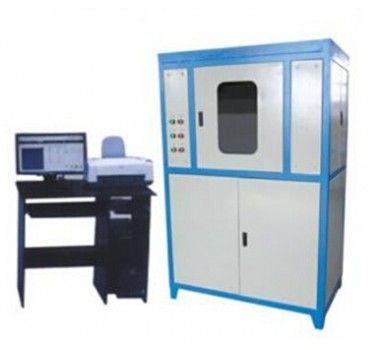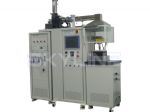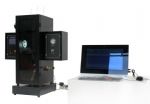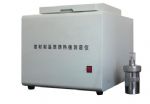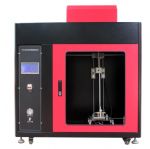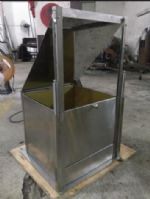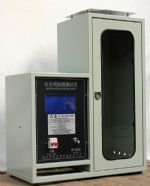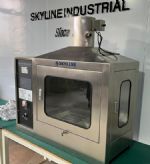 Toys Testing Equipment
Toys Testing Equipment Footwear Testing Equipment
Footwear Testing Equipment Tensile Testing Machine
Tensile Testing Machine Environmental Test Chamber
Environmental Test Chamber Building Material Flammability Test Equipment
Building Material Flammability Test Equipment Paper Testing Equipment
Paper Testing Equipment Spectacle Frames Testing Equipment
Spectacle Frames Testing Equipment Oil Analysis Testing Equipment
Oil Analysis Testing Equipment Lab Test Equipment
Lab Test Equipment Electronic Testing Equipment
Electronic Testing Equipment Stationery Testing Equipment
Stationery Testing Equipment Flammability Test Equipment
Flammability Test Equipment Furniture Testing Machine
Furniture Testing Machine Textile Testing Equipment
Textile Testing Equipment
 Toys Testing Equipment
Toys Testing Equipment Physical & Mechanical Testing
Physical & Mechanical Testing Flammability Testing
Flammability Testing Clamps for Toys Testing
Clamps for Toys Testing Electronic Toy Testing Equipment
Electronic Toy Testing Equipment ISO8124-4,EN71-8
ISO8124-4,EN71-8 Footwear Testing Equipment
Footwear Testing Equipment Fatigue Testing Equipment
Fatigue Testing Equipment Flexing Test Equipment
Flexing Test Equipment Impact Testing Equipment
Impact Testing Equipment Abrasion Testing Equipment
Abrasion Testing Equipment Waterproofness Tester
Waterproofness Tester Friction & Slip Testing
Friction & Slip Testing Tensile Testing Machine
Tensile Testing Machine Environmental Test Chamber
Environmental Test Chamber Building Material Flammability Test Equipment
Building Material Flammability Test Equipment Paper Testing Equipment
Paper Testing Equipment Spectacle Frames Testing Equipment
Spectacle Frames Testing Equipment Oil Analysis Testing Equipment
Oil Analysis Testing Equipment Lab Test Equipment
Lab Test Equipment Electronic Testing Equipment
Electronic Testing Equipment Stationery Testing Equipment
Stationery Testing Equipment Flammability Test Equipment
Flammability Test Equipment Furniture Testing Machine
Furniture Testing Machine Mattress Testing Machine
Mattress Testing Machine Table Testing Machine
Table Testing Machine Chair Testing Machine
Chair Testing Machine Textile Testing Equipment
Textile Testing Equipment Fabric and Garment Testing Instruments
Fabric and Garment Testing Instruments Color Fastness Testing Equipment
Color Fastness Testing Equipment
Thermal Conductivity System Tester
Thermal Conductivity System Tester
Production introduction
Applicable to: thermal conductivity of clay and sand dry test specimens, the thermal resistance of the specimen should be greater than 0.1m2.K/W. The heat flow meter is used to detect the thermal conductivity and thermal resistance of clay, sand, etc., and the computer is fully automated to generate an experimental report. The instrument uses a stable hot surface temperature on one side of the sample. Heat is transferred to the cold surface (room temperature) through the sample, and the transferred heat flow is measured to calculate the thermal conductivity and thermal resistance. Specially equipped with geotechnical sample cylinder and specific heat capacity test device, it can be used for thermal analysis and specific heat capacity measurement of soil such as clay and sand.
Technical parameters
| Specimen specifications | 300 × 300 (mm) picture keywords |
| Thickness | 10 to 40 (mm) (preferably 25 mm) |
| Cold plate temperature | 10 ° C ~ 50 ° C |
| Hot plate temperature Room temperature | ~ 80 ° C |
| Test accuracy | ≤ 3% |
| Test repeatability | <1% |
| Power supply voltage | AC 220V total power 2KW |
| Use environment | 23±2°C in the laboratory with air conditioning |
| Dimensions | length × width × height 800 × 600 × 1600 (mm) |
Working principle
Thermal conductivity tester, using double test piece measuring device, protective hot plate group: package
Including heating unit and cooling unit.
The heating unit should be divided into a central metering unit and a guard unit that surrounds the metering unit separated by a gap and is equipped with a heat insulating device.
The hot unit adopts a double hot surface heater, and the cold plate and the double hot surface are symmetrically arranged. The thickness of the test piece is set to move the space of the cold plate, and the tested piece is vertically placed in two flat plates having a constant temperature parallel to each other. In the steady state, the measuring part of the test piece has a constant heat flow, and the one-dimensional constant heat flow rate Q flowing through the metering unit, the area A of the measuring unit, the temperature difference ΔT of the cold and hot surface of the test piece can be measured by measuring the steady state. Calculate the thermal resistance R of the test piece, and according to the thickness of the test piece, the thermal conductivity of the test piece can be accurately calculated.

 Toys Testing Equipment
Toys Testing Equipment Footwear Testing Equipment
Footwear Testing Equipment Tensile Testing Machine
Tensile Testing Machine Environmental Test Chamber
Environmental Test Chamber Building Material Flammability Test Equipment
Building Material Flammability Test Equipment Paper Testing Equipment
Paper Testing Equipment Spectacle Frames Testing Equipment
Spectacle Frames Testing Equipment Oil Analysis Testing Equipment
Oil Analysis Testing Equipment Lab Test Equipment
Lab Test Equipment Electronic Testing Equipment
Electronic Testing Equipment Stationery Testing Equipment
Stationery Testing Equipment Flammability Test Equipment
Flammability Test Equipment Furniture Testing Machine
Furniture Testing Machine Textile Testing Equipment
Textile Testing Equipment

 English
English 中文
中文 Español
Español française
française العربية
العربية Русский
Русский


